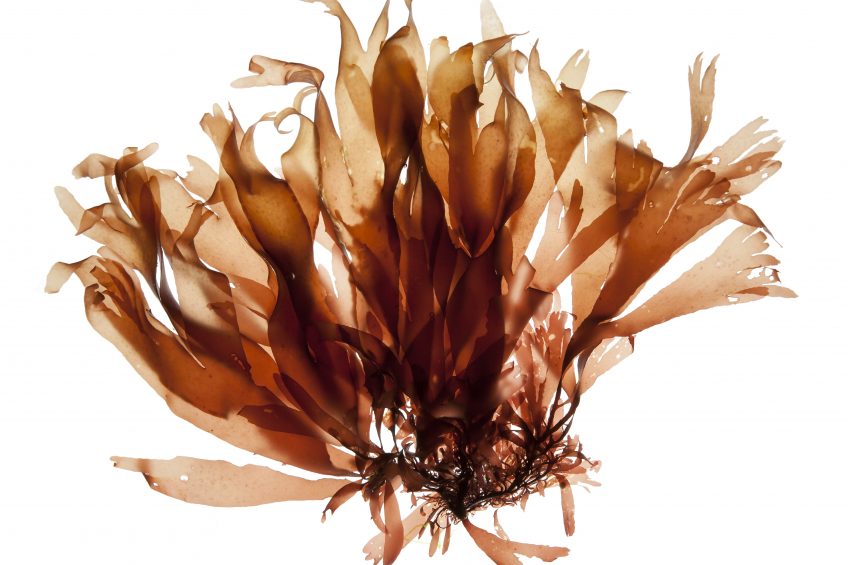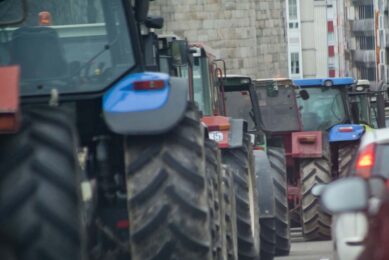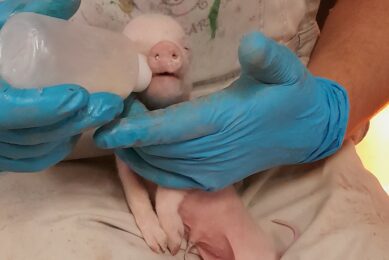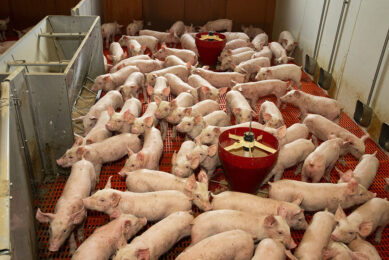Algae’s contribution to antibiotic-free

The complex issue of antimicrobial resistance is now a One Health challenge requiring global coordinated strategies and actions. A successful programme implementing algae-based products has delivered some promising results.
Highly involved in approaches to reduce antibiotic use, Olmix has developed a comprehensive and consistent programme, which relies on the use of specific algae-based products together with a strong technical and management support in the farms. Over the last three years, the company’s animal care teams have worked on projects in pig and poultry operations by accompanying producers with the aim of reaching a significant and measurable decrease of antibiotic use, even in preventative terms. Today, more than 20,000 pigs and over 1 million broilers were raised without antibiotics, thanks to algae.
3 step implementation programme
Whether it is in pig or poultry production, farmers have been used to using antibiotics as soon as performance parameters start to drift. Therefore, implementing antibiotic-free programmes in facilities that have been routinely using antibiotics for many years requires a specific approach, starting with the involvement of all stakeholders.
1-Clear motivation
For Olmix, the first step was to identify motivated operators willing to decrease their antibiotic use and having an interest for marketing differentiation towards the final consumers. The first marketing differentiation being the ‘raised antibiotic-free’ allegation, the second one being the ‘Thanks to Algae’ co-branding. More and more aware of environmental and health issues, consumers seek transparency and naturalness in how their food is produced. Thus, the first meeting with operators is dedicated to the explanation of the project
approach and objectives.
2- A global audit of the farm
The second step is to have a clear and detailed overview of the technical situation of the farm. For this, Olmix experts achieve a full audit of the farm, the purpose of which is to evaluate the feasibility to reach antibiotic-free production, by identifying the strong and weak points of the farm, and also to check if the withdrawal of antibiotics would not jeopardise the farm’s economic results.
3-Implementation of the programme adapted to the farm situation
Following the global audit, the third step is to adapt the Olmix antibiotic-free programme to support the progressive withdrawal of antibiotics while maintaining performance of the farm.
The pig and poultry programmes are built to act on the five main functionalities that influence animal’s status and performance. The programme addresses the whole animal ecosystem (internal and external) focusing on environmental hygiene, feed safety managing mycotoxin risk together with the support of immunity and digestive welfare and efficiency. Programmes are adapted to each species and each physiological stages of the animals.
Successful on field experience
The programme was implemented in a farrow-to-finish pig operation with 840 sows in France. The farm was submitted to a global and detailed audit in December, 2015, from which an action plan was prepared by Olmix experts and agreed with all collaborators. The final objective was to reduce the antibiotic use from 100% of the piglets being systematically treated with one or several antibiotics, to a maximum of 10% of the piglets being treated with only one antibiotic. To achieve it, the action plan and the use of the Olmix
algae-based product range was implemented step-by-step from February to May 2016.
The results of this case study (Table 1) show that the use of coccidiostat could be reduced by 98.9% and antibiotic use by 94.5%. Performance level was maintained, though the farm experienced some problems related to ventilation during hot temperature periods over the summer. After the ventilation problem was solved, diarrhoea problems that triggered the punctual use of coccidiostat were stopped and piglet weight at weaning was back to normal. The study continues in this farm to stabilise antibiotic-free status and performance. The one year feedback already shows that it is highly important to adapt the strategy to each situation, and confirms the need of a global approach to reduce the use of antibiotics in farms.
Antibiotic-free is feasible
Raising pigs and poultry antibiotic-free is feasible. The cornerstone to achieve it is to gather all the stakeholders around the table, each one of them needing to find their interest in applying the programme. A holistic approach and some adjustments in management before the total withdrawal of all antibiotics are required. Moreover, a good combination of efficient solutions to ensure environmental hygiene, secure the feed supply by covering the mycotoxin risk and promote animal’s immunity and digestive health and efficiency will also play a key role to achieve sustainable results. Algae proved to offer innovative, efficient and reliable solutions.
The brand ‘Thanks to Algae’ certifies the use of algae-based solutions to reach the antibiotic-free objective. At the moment, claims such as ‘no antibiotics’ or ‘raised without antibiotics’ are written on products sold in supermarkets, though it doesn’t mean that animals have never received antibiotics. The most challenging part of the rearing period is during the first weeks of life of the animals, during which most antibiotic treatments are administered. Olmix starts its programme by focusing on this period in order to reach the ultimate distinction of ‘antibiotic-free ever’, ‘Thanks to Algae’.
 Beheer
Beheer





 WP Admin
WP Admin  Bewerk bericht
Bewerk bericht